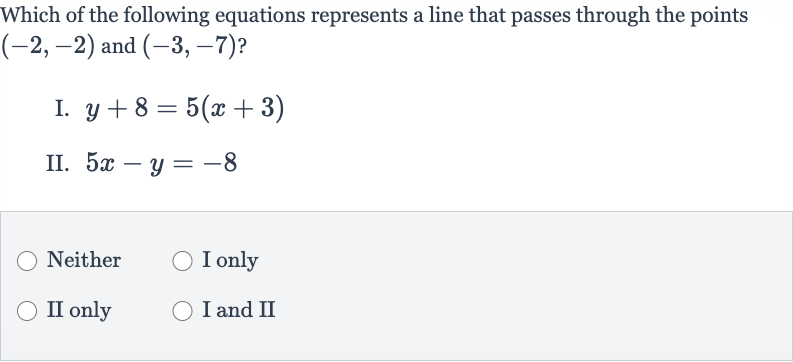Full solution
Q. Which of the following equations represents a line that passes through the points and ?I. II. NeitherI onlyII onlyI and II
- Calculate Slope: To determine which equation represents the line that passes through the given points, we first need to find the slope of the line using the slope formula: slope = , where and are the coordinates of the two points.Using the points and , we calculate the slope as follows:.
- Write Point-Slope Equation: Now that we have the slope, we can use point-slope form to write the equation of the line. The point-slope form is , where is the slope and is a point on the line.Using the point and the slope , the equation becomes: or .
- Compare with Given Options: We can now compare this equation with the given options. The equation we derived is , which simplifies to , or . This equation is not in the same form as either of the given options, so we need to check each option to see if it is equivalent to the equation we found.
- Check Option I: Let's check option I: . We simplify this equation by distributing the : . Subtracting from both sides gives us: . This equation is not equivalent to the equation that we derived from the points, so option I does not represent the line.
- Check Option II: Now let's check option II: . We rearrange this equation to solve for : , and then multiply by to get . This equation is equivalent to the equation that we derived from the points, so option II does represent the line.
More problems from Solve trigonometric equations
QuestionGet tutor help
QuestionGet tutor help
QuestionGet tutor help
QuestionGet tutor help
QuestionGet tutor help
QuestionGet tutor help
Question
. Find the value of in degrees.Write your answer in simplified, rationalized form. Do not round.____
Get tutor helpQuestionGet tutor help

